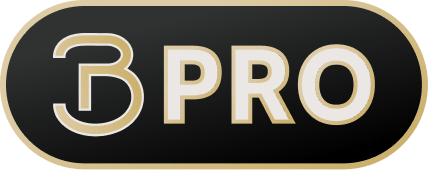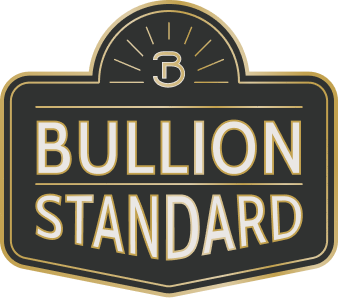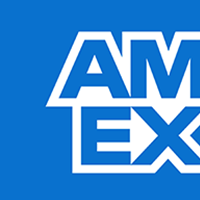What Are the Best Gold and Silver ETFs?
By Bullion Standard ·
7 min read
If you're looking for a flexible way to diversify your portfolio, gold and silver ETFs can be a great choice. They offer a simple, hassle-free way to get started in the precious metals market.
That said, even if you know you want to invest, knowing which ETFs are right for you can still feel overwhelming.
At Bullion Standard, we're here to simplify the process. We’ve been in the precious metals business for over 20 years, and our goal is to help investors of all experience levels succeed.
Let’s dive in: we'll cover the basics of ETFs, the top gold and silver ETFs available today, and how to choose the right option for you.

What Is an ETF?
An Exchange Traded Fund (ETF) is an investment fund that pulls together money from multiple investors to buy assets like stocks, bonds, or commodities. Investing in ETFs is an easy way to get exposure to these markets without directly buying the assets yourself.
ETFs trade on stock exchanges, just like individual stocks. This means investors can buy or sell shares of the ETF throughout the trading day at market prices, providing a good deal of flexibility.
Why Invest in Gold and Silver ETFs?
Gold and silver are known as “safe-haven” assets because they tend to hold value even when the economy isn’t doing well.
Investing in gold and silver ETFs can offer these same benefits. However, these investments also come with some extra perks. For one, you don’t have to deal with the trouble of protecting or storing the metals, which can get pricey.
Plus, they often have lower transaction costs, making them a more attractive option for cost-conscious investors.
Types of Gold and Silver ETFs
There are several types of gold and silver ETFs available to investors. The main differences are in how they are structured and what assets they hold.
Physical Gold and Silver ETFs
Physical gold and silver ETFs hold real bullion in secure vaults, so when you invest, you own a share of the actual metal.
This gives you direct exposure to the precious metals market without the hassle of storage. They also closely follow the spot price, making them a reliable option for conservative investors.
Futures-Based ETFs
Futures-based ETFs don’t hold physical metals. Instead, they invest in contracts that speculate on future gold or silver prices.
While they mimic price movements, these ETFs can sometimes deviate from the spot price due to market factors like contract rollovers or leverage. All in all, they are more complex and risky, making them better suited for experienced investors comfortable with futures trading.
Mining Stock ETFs
Mining stock ETFs invest in companies that mine and produce gold or silver, giving you exposure to the metals market indirectly.
The value of these ETFs is tied to the stock performance of mining companies. As a result, these funds are more volatile but can offer higher returns when metal prices rise.
Best Gold ETFs for Investors
Here are some of the top gold ETFs available on the market today:
1. SPDR Gold Shares (GLD)
SPDR Gold Shares (GLD) is one of the largest and most widely traded gold ETFs on the market. This ETF holds physical gold bullion, providing investors with a direct way to track the price of gold. GLD is ideal for investors who want simple exposure to gold without the need to store or secure physical bars or coins.
Overall, as a well-established fund, GLD offers liquidity and easy trading. This makes it a solid choice for both seasoned and beginner investors alike.
2. iShares Gold Trust (IAU)
Similar to GLD, the iShares Gold Trust (IAU) also holds physical gold bullion. However, it comes with a lower expense ratio, making it a more cost-effective option.
As such, IAU is an appealing choice for long-term investors who want to minimize fees while still benefiting from gold's stability. Like GLD, it closely tracks the spot price of gold and offers the same convenience of ETF trading without the need to own physical metal.
VanEck Vectors Gold Miners ETF (GDX)
If you're more interested in the gold mining sector rather than physical gold, the VanEck Vectors Gold Miners ETF (GDX) is a top option. This ETF holds a portfolio of gold mining stocks, offering indirect exposure to gold through the companies that extract it.
While GDX can be more volatile due to the nature of mining stocks, it provides potential for higher returns—especially when gold prices are rising.
Best Silver ETFs for Investors
Looking to invest in silver? Here are the top ETFs to consider:
iShares Silver Trust (SLV)
The iShares Silver Trust (SLV) is the largest and most popular silver ETF, holding physical silver bullion in secure vaults.
This ETF is designed to closely track the spot price of silver. SLV is a great choice for those who want to take advantage of the direct exposure to silver’s market movements as well as the ease of ETF trading.
Sprott Physical Silver Trust (PSLV)
The Sprott Physical Silver Trust (PSLV) is another highly regarded silver ETF that holds physical silver.
What sets PSLV apart is its unique redemption feature, allowing investors to exchange their shares for actual physical silver. This option appeals to investors who want the flexibility of an ETF but still like the idea of being able to own the physical metal.
Global X Silver Miners ETF (SIL)
For investors who prefer exposure to the silver mining industry, the Global X Silver Miners ETF (SIL) is a leading option. SIL invests in a basket of silver mining companies, providing indirect exposure to silver through their performance.
Like gold mining ETFs, SIL can be more volatile than physical silver ETFs but may offer higher growth potential when silver prices rise.

How to Choose the Right ETF
When selecting a gold or silver ETF, consider the following factors:
Expense Ratios
The expense ratio is the annual fee charged by the ETF manager, shown as a percentage of your total investment. Lower fees help keep more of your money invested and growing.
Even slight differences in these fees can add up, especially over the years. Always compare expense ratios to find a balance between cost and value.
Liquidity
Liquidity measures how easily you can trade ETF shares. Higher liquidity means you can buy or sell without impacting the price too much.
ETFs with low liquidity might have higher transaction costs due to wider bid-ask spreads. Always check the ETF’s trading volume to ensure it offers the liquidity you need.
Investment Goals
Your investment goals should guide your ETF choice. Are you seeking long-term stability, or aiming for short-term gains?
For hedging against market volatility or inflation, a physical gold or silver ETF offers stability. If you’re chasing higher growth and can handle more risk, a mining stock ETF might be a better fit.
The Wrap Up
Gold and silver ETFs provide a simple and flexible way to invest in the precious metals market. By learning about the different types of ETFs and their unique benefits, you can choose the option that best fits your financial needs and goals.
At Bullion Standard, we want to help you make informed investment choices with our range of educational resources. It doesn't matter if you're new to ETFs or looking to deepen your understanding—our tools and guidance are here to support you.






















